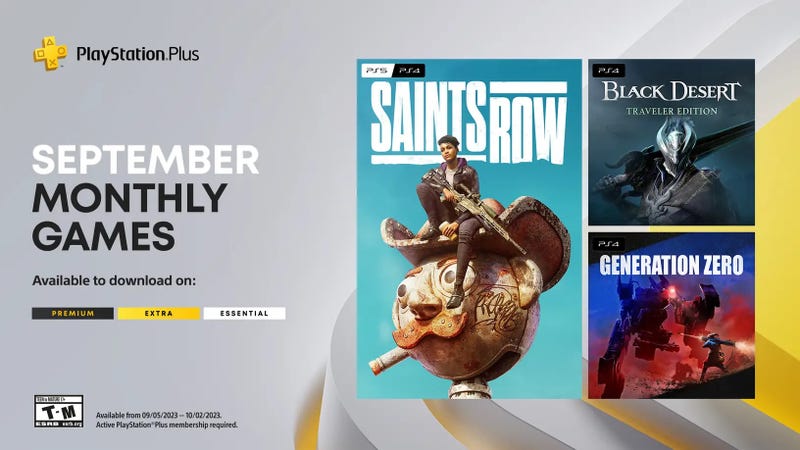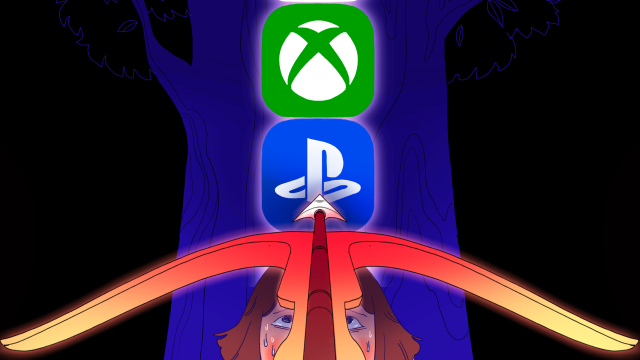These companies are bleeding me dry. Starfield on Game Pass. Sea of Stars on PS Plus. Ahsoka on Disney Plus. The Last of Us on (HBO) Max. Subscription services used to make me feel like I was getting away with something. Cheaper, easier entertainment at the click of a button. No commercials, Fewer risks. Hassle-free. Now the magic’s wearing off and the prices are going up. I think it might be time to cancel.
There’s a problem at the heart of subscription entertainment and it’s that very few people actually have the time or money to truly justify them. I can’t keep up with every new Star Wars spin-off and extended Marvel Cinematic Universe show, let alone the critically-acclaimed hits that debut every other month on competing platforms. It’s even worse in video games. The Xbox Game Pass library grows every week, while PlayStation Plus and Switch Online regularly bring classic games from decades ago back into circulation. And while a single season of TV lasts 10 hours at most, games frequently extend beyond that.
Meanwhile, each of these subscription services has decided to hike the price while simultaneously getting worse. Disney Plus jumped from $US11 a month to $US14. Max increased by only a dollar while nuking tons of old shows like the cult hit Westworld. Game Pass Ultimate increased by $US2 a month, followed by the most basic tier of PS Plus going from $US60 a year up to $US80. After 12 years at just $US10 a month, even Spotify raised its price to $US11.
Each increase feels small in isolation. How can you complain about being charged one extra buck for instant access to most major music ever produced? In aggregate, however, it’s starting to break the bank. I’m currently subscribed to Hulu, Max, Apple, Peacock, PS Plus, Game Pass Ultimate, and Spotify. Over the course of a year, each of those small price hikes comes out to $US144 extra. Still small relative to the rest of my budget, but enough to be a wake up call to make me reconsider why I’m spending close to $US1,000 on Content™ I don’t use and will never own.
PS Plus is just the latest price hike
Streaming platforms in particular have taken on a familiar ebb and flow. The latest season of a hit show appears—The Witcher, Andor, Severance, Succession, Yellowstone—and I flock to binge-watch it or stay current as the episodes trickle out one by one. A couple months go by and it’s onto the next app. Usually the bench is just deep enough to keep me from putting the subscription entirely on hold. My kids want to watch Bluey. Or maybe I’ll finally get around to catching up on Foundation.
With gaming it’s more subtle. Game Pass has been great for trying stuff out I might never have taken the chance on buying outright. The beautiful puzzle platformer Planet of Lana comes to mind. Exoprimal too, the underrated dino-shooter of the summer. But inevitably another big blockbuster or indie sensation drops and steals me away.
Currently I’m deep into Starfield, the sprawling sci-fi RPG from the studio behind Fallout 3 and The Elder Scrolls V: Skyrim. It’s impressive, overwhelming, and all-consuming. So why am I renting it from Microsoft instead of spending half my annual Game Pass subscription just to own it? We’ve been terrified that video game subscriptions would cannibalize new game sales and thus undercut studios in an industry infamous for fickle audiences and ballooning budgets. Instead, great new forever games—Baldur’s Gate 3, Diablo IV, The Legend of Zelda: Tears of the Kingdom—are flipping the calculus. Maybe games that you can spend months and even years getting lost in aren’t the best test case for the value proposition of a pricey annual subscription (Game Pass Ultimate is $US204 a year).
PlayStation Plus is an even stranger beast. Sony split the program up into three tiers last year. The cheapest level, which is now $US80 a year, is needed to play games like Call of Duty: Modern Warfare II online, despite that feature being free on PC. To sweeten the deal, Sony offers decent “free” games to PS Plus every month, creating a rental library you have access to as long as you keep paying to mask this absurd requirement, but the mileage varies.
Rocket League, one of the top games of the PS4 console generation, was “given away” as a PS Plus monthly game. Last month, retro pixel art RPG Sea of Stars could have gotten the same treatment, but instead it was added to the more expensive Extra tier that’s now $US135 a year. If you’re a diehard Sony fan embedded deep within the PlayStation ecosystem, paying that might be worth getting access to a buffet of games you’d have to spend thousands to own otherwise. More likely, though, you’ve already played a lot of them and spend most of your time talking shit with friends inside your live-service hangout of choice.

Maybe you’re lucky and pass the time getting heckled by neglected children in Apex Legends, Overwatch 2, or Fortnite, free-to-play games that don’t even require PS Plus to go online. For me it’s Destiny 2, a lofty sci-fi shooter I love dearly that keeps getting more expensive. It doesn’t technically require a subscription like most MMOs, but a year’s worth of content will run you $US100, even more if you partake in its ever-expanding, in-game space marine fashion economy.
New costumes cost $US15 a pop, and Bungie recently raised the price of a seasonal battle pass, which still requires you to grind to unlock its rewards (or pay to get them instantly), from $US10 to $US12. Playing Destiny 2 is really the only reason I need PS Plus, which also indirectly benefits Bungie now since Sony purchased the studio last year. A “virtuous cycle” indeed. I hope Bungie charges as much as it needs to to make Destiny 2 thrive. I just might not be popping around as often.
Of course, dipping in and out of paid seasons and monthly subscriptions is easier said than done. It requires foresight, planning, and diligence. How many times have I stumbled through a login screen to cancel something, fumbling for a forgotten password and trying to convince a robot that I’m not also a robot, only to give up or forget when one of my kids starts screaming for something, dinner begins to burn on the stove, or another notification for another app distracts me on my phone?
For example, if you had asked me throughout last year if I was a Google Stadia subscriber I would have said no. If you had asked Google Stadia it would have said yes. Despite my vivid memories of canceling multiple times, the membership fee was paid on time every month. $US10.59 for Stadia Pro, like clockwork. I realized this when the service announced late last year that it was closing down and refunding customers their purchases and I went to check the status of my account. What started as a multi-month free trial in November 2019 had rolled on for nearly three years. $US307.11 down the drain. Stadia had been a joke. It made me feel like one too.
Is Game Pass still worth it?
The subscription model banks on this. Some people will cancel after the free trial or when they tire of the service; many, overwhelmed, forgetful, and exhausted, simply will not. That friction is compounded by the fuzzy math that makes it easy to simply wait another day, another week, another month before opting not to renew. At any given point there are lots of shows I could be watching, games I could be playing, or music I could be listening to. The value is there if only I had the fortitude and focus to seize it. An illusion, but a compelling one.
Then I actually look back at what services I’ve actually used, how often and for what, and it gets eerily close to break-even with what the cost of just buying the content outright might have been. That number is harder to nail down in streaming, where digital downloads and Blu-ray releases are rarer. In games, it’s much more straightforward. These are the main games I’ve played on Game Pass in 2023: Starfield ($US70), Planet of Lana ($US20), Ravenlock ($US25), Hi-Fi Rush ($US30), Wo-Long: Fallen Dynasty ($US60), Redfall ($US70), Fallout: New Vegas ($US10). That’s $US285 worth of games compared to the $US137 for nine months of the subscription. Paying out of pocket, I probably would have only actually shelled out for Starfield, Hi-Fi Rush, Planet of Lana, and New Vegas, which is $US130. And therein lies the rub.
My situation on PS5 and Switch isn’t much better. I used the PS Plus library to replay the PS4 version of The Last of Us ($US20), and try Humanity ($US30) and Rogue Legacy 2 ($US25). I would have used it to play Sea of Stars ($US35) too had I not already received code for a review copy. I also downloaded the PlayStation classics Twisted Metal 2 ($US10) and Wild Arms ($US10), but never touched them. A year of PS Plus Premium was $US120. Let’s call it a wash. I don’t play Switch games online and only played about five hours of The Legend of Zelda: Minish Cap this year, but the Mario Kart 8 Deluxe DLC ($US24) came in handy. Not great for a year for the Expansion Pack at $US50.
These services have been invaluable tools for discovery, encouraging me to try games, movies, and music I might never have found and subsequently fallen in love with otherwise. But it also creates a pressure to always try to consume more, more, more. The money goes out the door every month, it would be a waste not to make the most of it, right? This is possibly what I hate more than anything else when it comes to the way subscriptions have wiggled their way into every corner of my media diet. More often than not, it just doesn’t feel like a healthy, fun, or sustainable way to engage with the things I love.
Not to mention it appears to slowly be eroding the creative industries that are supposed to make the whole thing work. The jury’s still out on whether gaming subscriptions will lead to worse games and more layoffs, but the damage has been done in music and Hollywood. I think I’m ready to stop giving Bob Iger and David Zaslav my unconditional money, no questions asked, for the time being.
This doesn’t mean I’m about to cull every subscription overnight, although I probably should. Maybe I’ll start by getting rid of one a month and then only begin to circulate them back in when it makes sense. Or maybe once I’m free of the grip their sunk cost fallacy has on me I’ll realize I should have canceled them all a long time ago. Life is too short and I still have hundreds of hours of Starfield to play.

Leave a Reply